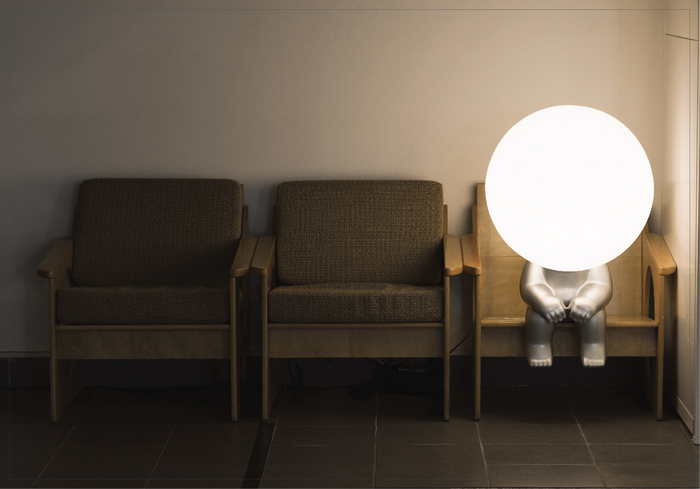【Never Mind】Lin Chien-Jung's Solo Exhibition

Exhibition:09.20(Wed)~ 10.19(Thu)/ NTHU Center for Arts and Culture_General Building 2 (1F) Map
Opening:09.20(Wed)16:00 / NTHU Center for Arts and Culture_General Building 2 (1F)
Meet the Artist:09.20(Wed)16:30 / NTHU Center for Arts and Culture_General Building 2 (1F)
Weekdays 12:00-18:00 / Weekends12:00-17:00 / National Holidays (Moon Festival、Double Tenth Day) Closed
"Never mind", in Mandarin, it pronounces “Mei-guan-xi”. “Mei”1 represents Tsing Hua’s tradition and is often used by students as a pun to make fun of. The expression "never mind" shows the careless commitment, perfunctory, helplessness in modern society. This kind of joking and ironic attitude is played by interacting with the environment, which is commonly used in contemporary art. In old times, mountains and rivers are often used in the drawings to represent one's ambitions. Lin Chien-Jung used the "Light Bulb Figures ", a big-headed doll without facial features, to metaphorize imaginative emotions in relate to complexity of the space. The cute and lonely posture reflects the attitude of "in the vast world, I am the one who is the only one." This lightbulb figure touches people's hearts and became famous. In this exhibition, in addition to the distinctive art works, there are also inflatable installations combined with the space. Forming a whispering, dim atmosphere. It presents the individual's current feelings and confusion for the future.
Lin Chien-Jung is good at using the light and shadow trajectories to explore contemporary art. His series of lightbulb figures are collected in major art institutions and displayed in many public art settings. He was selected by the Council for Cultural Affairs to go to Gasworks Studio in London, UK. He is selected by the Asian Cultural Council (ACC) to participate in ARCUS Studio in MotoyamaCho, MitoShi, Japan. He is also selected by the country to be an artist-in-residence for the Watermill Center in Long Island of the US.
Note. 1 “Mei” represent plum flower which is also the last name of Tsing Hua University’s former principal in 1931, Mei Yi-Chi, who plays an important part in Tsing Hua’s history.